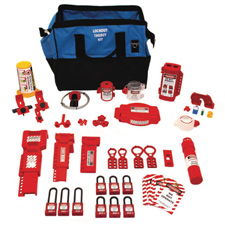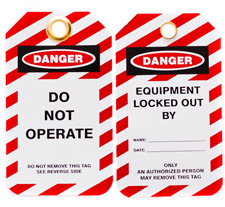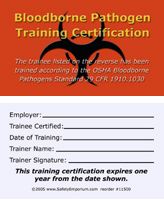| The Home page of ILPI's Safety Data Sheet (SDS) Resource, the leader in SDS information since 1995! | |
| The history and philosophy behind this resource. | |
| A curated collection of books and reference materials concerning Safety Data Sheets and closely related topics. | |
| Paste your plain text SDS into the SDS-Demystifier, and it will be converted into a hypertext-enriched document with links to detailed explanations of each key term. | |
| An extensive list of frequently asked questions about Safety Data Sheets including regulations, content, compliance, and more. | |
| A humorous take on Safety Data Sheet jargon. Fill in the blanks on our entry form to generate a personalized Unsafety Data Sheet to share with your coworkers. | |
| Since 1995, we've maintained this massive curated list of the best places to find Safety Data Sheets on the Internet. | |
| Way more than a glossary, this hypertext-enhanced resource covers hundreds of SDS-related terms and expert knowledge. Each entry includes both the SDS relevance and links to additional authoritative resources. | |
| Archived results of Safety Data Sheet related polls taken by some of our millions of site visitors | |
| You are here! The OSHA regulations behind SDS regulations, including the inspection guidelines and over 400 official interpretations letters under the Hazard Communication Standard | |
| Commercial suppliers of SDS authoring and management software as well as cloud compliance services. | |
| Commercial companies that will create SDS's for your specific needs as well as SDS translation companies. |

Safety signs, banners, and scoreboards? Get yours at Safety Emporium!
| Title: 11/10/1999 - LOTO of hydraulic systems; postal workers' exposure to hazardous material spills. | |
| Record Type: Interpretation | Standard Number: 1910.147; 1910SubpartS; 1910.120(q); 1910.1030; 1910.1200 |
OSHA requirements are set by statute, standards and regulations. Our interpretation letters explain these requirements and how they apply to particular circumstances, but they cannot create additional employer obligations. This letter constitutes OSHA's interpretation of the requirements discussed. Note that our enforcement guidance may be affected by changes to OSHA rules. Also, from time to time we update our guidance in response to new information. To keep apprised of such developments, you can consult OSHA's website at https://www.osha.gov
Mr. Dave Folk
President
Empire Safety Consulting
4291 Byrum Road
Onondaga, MI 49264
Dear Mr. Folk:
Thank you for your two August 24, 1999 letters to the Occupational Safety and Health Administration (OSHA) requesting interpretation of the lockout/tagout (LOTO) standard and biohazards for postal workers handling mail. Your questions and our replies follow:

Electrical plug lockout devices like this one from Safety Emporium keep your workplace safe and OSHA-compliant.
Question #1: To what extent must an employer go to secure a hydraulic pump and 220/440 volt electric motor during a lockout? Some pressure usually remains within hydraulic lines on the hydraulic systems, even when the system is shutdown.
Reply: The LOTO standard provides the flexibility for each employer to develop an energy control program, as set forth in 29 CFR §1910.147(c)(1), which is suited to the needs of the particular workplace and the particular types of machines and equipment being maintained or serviced. The extent to which an employer must control hazardous energy depends upon the type of servicing or maintenance work being performed, as well as the type and magnitude of the energy. For example, a hydraulic pump overhaul or the removal of a hydraulic line is much different, and requires different energy control procedures, than working on a piece of equipment that is powered by the hydraulic system. Also, working on the 220/440 volt, nominal, electrical motor is different than working on either the hydraulic system or the equipment powered by the hydraulics. 1
In some operations, the movement of a simple throw disconnect switch to the "off" mode is a step sufficient to isolate the machine or equipment from the energy source as required by §1910.147(d)(3). In other cases, a series of predetermined steps may be necessary to achieve an orderly shutdown of a machine or piece of equipment in order to safely perform the servicing or maintenance work. This would be the case for the hydraulic pump overhaul or hydraulic line maintenance tasks.
The employer should perform hazardous energy analyses of the workplace equipment and/or machinery to determine the specific procedures for the control of potentially hazardous energy when employees are performing servicing and maintenance activities covered by the standard. This is a prerequisite shutdown preparation step, described in §1910.147(d)(1), which requires authorized employees to have knowledge concerning the type and magnitude of the energy, the hazards associated with the energy to be controlled, and the methods or means to control the energy prior to shutting off the machine or equipment for servicing and/or maintenance activities.

When working around hazardous sources of energy, OSHA requires the use of lockout devices like these from Safety Emporium.
Question #2: If an employer secures the system motor (by service panel lockout) against unauthorized or accidental use and no energy hazards related specifically to the hydraulic system are known to exist, does OSHA commonly accept this adequate lockout protection?
Reply: Yes, but only if all of the provisions of the Lockout/Tagout standard, §1910.147 are met and all hazardous energy sources are effectively controlled. Whether a hydraulic pump and motor is effectively locked or tagged out will have to be determined on a case-by-case basis by the employer, who is ultimately responsible for the safety of employees.2
It cannot be overemphasized that employees performing tasks may be exposed to serious hazards if the status of the lockout control can be changed without their knowledge. For this reason, OSHA requires that the authorized employee must be the only person who applies and removes the lockout device(s), unless the §1910.147(e)(3) exception applies.
Question #3: Is it OSHA’s policy to require employers to "bleed off" any pressure which may exist within hydraulic systems before accepting the system as effectively "locked out" against unauthorized movement?
Reply: Yes. Hydraulic systems may contain potentially hazardous energy that requires the employer to "bleed off" the pressure. Paragraph 1910.147(d)(5)(i) requires all potentially hazardous stored or residual energy to be relieved, disconnected, restrained, or otherwise rendered safe. Potentially hazardous energy sources are defined as those that can cause injury to employees working in, on, or around machinery or equipment.
With regard to your service panel lockout example, the type of maintenance (i.e., welding adjacent to a pressurized hydraulic machine component) or servicing (i.e., using a sharp tool to clear a material jam adjacent to a pressurized rubber hydraulic hose) work performed will dictate the necessary precautions. If the task(s) can impact the hydraulic system causing a hydraulic liquid hazard, then that energy source must be controlled.

OSHA-required safety tags communicate life-saving information. Get your lockout/tagout safety signs, tags, and labels at Safety Emporium.
Additionally, simply shutting off a machine, piece of equipment, or process may not completely control the hazardous energy; residual energy may still be present or the potential may exist for unexpected startup or energization of the machine or equipment. Also, if there is a possibility of re-accumulation of stored energy, verification of isolation must be continued until the servicing and maintenance is completed, or until the possibility of such accumulation no longer exists [§1910.147(d)(5)(ii)].
Question #4: You stated that "postal workers are periodically faced with leaking packages of unknown contents and many times it can be determined that the contents are biohazards being sent for lab work." What is OSHA's position as to what type of training the Postal Service must perform to be in compliance with federal standards? Does the situation fall under the "Specialized Training" elements of the Hazard Communication Program or would employees required to perform the clean-up task obtain hazardous Waste Training? What if the contents of the liquid cannot be identified? Does the training requirement change? (Note: Usually the volume of liquid is small.)
Reply: We’re pleased to provide this information for you, and the United States Postal Service (the "Postal Service") publishes documents that also address this subject. For your convenience, we have identified those documents below.
<OSHA's Hazardous Waste Operations and Emergency Response standard (HAZWOPER), codified at 29 CFR 1910.120, contains training and other worker protection requirements that may apply to the activities you describe. Biological agents are included in OSHA's definition of a hazardous substance in paragraph (a)(3). Paragraph (q) addresses an employer’s obligations when employees are required to respond to an emergency release of a hazardous substance, whether the character of the substance is known or unknown. Postal workers need to be trained according to paragraph (q) of HAZWOPER if they are expected to respond to hazardous substance emergency releases.
A thorough discussion of the distinction between an incidental release and a release that requires an emergency response is provided in Appendix E of OSHA Directive CPL 2-2.59A, Inspection Procedures for the Hazardous Waste Operations and Emergency Response Standard, 29 CFR 1910.120 and 1926.65, Paragraph (q): Emergency Response to Hazardous Substance Releases (https://www.osha.gov/enforcement/directives/cpl-02-02-059). As you may know, the Postal Service accepts limited quantities of hazardous materials for mailing. If a shipper complies with the packaging requirements in the USPS Domestic Mail Manual, the hazards to workers should also be limited. You’ll find the hazardous materials "mailability rulings" in Section C023 of the Postal Service Domestic Mail Manual, available at https://pe.usps.com.
Employees who respond to incidental releases of biological hazards must be protected according to other OSHA standards. For example, if you anticipate that employees will be exposed to blood or other potentially infectious materials (OPIM) in the workplace, then those employees are covered by OSHA’s bloodborne pathogens standard, §1910.1030. The bloodborne pathogens standard requires, among other employee protections, employee information and training described in paragraph (g)(2). Likewise, employees exposed to other biohazards from incidental spills must be protected by personal protective equipment in accordance with 1910 Subpart I, Personal Protective Equipment (PPE), and provided training consistent with §1910.132(f).
OSHA's Hazard Communication standard (HCS), 29 CFR §1910.1200, specifically exempts biohazards from coverage [see paragraph (b)(6)(xii)]. Therefore, the training requirements under the HCS do not apply where the material is a biological hazard. If, however, the material is a hazardous chemical that is not exempted by paragraph (b)(6) of the HCS, then the training requirements contained in §1910.1200(h) apply.
The Postal Service describes OSHA requirements and Postal Service procedures and training related to hazardous materials spills in their publication, Hazardous Materials and Spill Response, Handbook EL-812, dated May 1998. In addition, Postal Service Management Instruction EL-810-96-1, Response to Hazardous Materials Releases, describes Postal Service training procedures and requirements for emergency response plans and standard operating procedures. These documents can be downloaded from the Postal Service’s website (https://www.usps.com) by entering the publication number as a search term.
Sincerely,
Charles N. Jeffress
Assistant Secretary
Footnote(1) As your question involved an electric motor, it is important to note that the electrical standards in (§1910, Subpart S) contain requirements for employee safety relative to electrical hazards in the workplace. The electrical safety-related work practices section, §1910.331 through §1910.335, contains provisions (§1910.333(b)) for safeguarding workers (i.e., for lockout and tagging) from the hazards of contacting electrically energized parts. (Back to text)
Footnote(2) In accordance with §1910.304(e)(1)(iv), the overcurrent protection devices must be readily accessible to each employee or authorized building management personnel. Caution must be taken not to lock the service panel cabinet and impede employee access to the other operational overcurrent devices. (Back to text)
The original official public domain version of this document is available from OSHA at https://www.osha.gov/laws-regs/standardinterpretations/1999-11-10-1.
